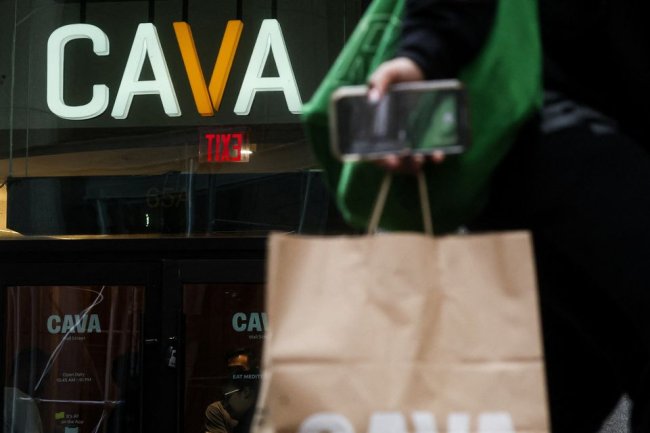Team Transitory Had a Point About Inflation
But we didn’t anticipate the war in Ukraine, and we underestimated the supply-chain bottlenecks. By Alan S. Blinder July 19, 2023 1:05 pm ET A shopper at Whole Foods in New York, June 28. Photo: Richard B. Levine/Zuma Press When the Federal Reserve meets this month, someone should mention the widely derided Team Transitory from 2021. Remember them? (Full disclosure: I was a member.) The Fed was also on the team back then, although Chairman Jerome Powell dropped the adjective “transitory” in November 2021. The financial markets signed on as well: The break-even expected inflation rate in the Treasury Inflation-Protected Securities market hovered near the Fed’s target through most of 2021. Later, as inflation went higher and higher, members of Team Transitory, including me, issued many mea culpas. Inflation wasn’


A shopper at Whole Foods in New York, June 28.
Photo: Richard B. Levine/Zuma Press
When the Federal Reserve meets this month, someone should mention the widely derided Team Transitory from 2021. Remember them? (Full disclosure: I was a member.) The Fed was also on the team back then, although Chairman Jerome Powell dropped the adjective “transitory” in November 2021. The financial markets signed on as well: The break-even expected inflation rate in the Treasury Inflation-Protected Securities market hovered near the Fed’s target through most of 2021.
Later, as inflation went higher and higher, members of Team Transitory, including me, issued many mea culpas. Inflation wasn’t nearly as transitory as we had thought. Bad choice of adjective.
It turns out, however, that while the name was inapt and our implicit inflation forecasts were way off, Team Transitory’s central idea may be vindicated. The notion was that most of the rising inflation wasn’t due to an overheated economy fueled by monetary and fiscal policy, but rather to several “special factors” that would disappear on their own. Principal among them were rising prices for food and energy and supply-side bottlenecks from the pandemic.
The policy implication was that bringing inflation down wouldn’t require a recession. Inflation would mostly fall of its own accord. To be sure, the Fed needed to raise interest rates; rates near zero were inappropriate in a rapidly recovering economy with rising inflation. But the Fed didn’t need to push rates so high as to cause a recession.
That may be happening now. The 12-month consumer-price index inflation rate peaked at a seasonally adjusted 8.9% in June 2022 and is down to 3.1% for the year ending June 2023. That’s quite a drop in a single year. The Fed’s preferred measure, the deflator for personal consumption expenditures, hasn’t fallen quite as much. But on a 12-month basis, it’s down from 7% in June 2022 to 3.8% in May 2023. When the June 2023 number comes out, it will probably go lower.
None of this was due to economic slack. The post-pandemic boom continues. The unemployment rate has been remarkably steady in the 3.5% to 3.7% range since the Fed began tightening. That’s below what most economists think of as the “full employment” or “natural” rate. (The Fed’s current estimate is 4%.)
Gains in payroll employment have slowed lately but remain more than double the pace needed to accommodate normal labor-force growth. The Commerce Department’s initial estimate of real gross domestic product growth in the second quarter of 2023 isn’t in yet. But when it is, growth over the past four quarters looks likely to come in around 2.5%—again above trend. (The Fed’s estimated trend is 1.8% a year.)
So, far from having a recession, we’ve barely had a slowdown. Whatever degree of slack the U.S. economy had when the Fed began tightening in March 2022, it surely has less now, not more. Yet inflation has fallen sharply.
So was Team Transitory right after all? Not quite. A process that takes two-plus years to work itself out shouldn’t be labeled “transitory.” Our mea culpas stand because our timing was way off. Why?
A first and obvious reason was Russia’s invasion of Ukraine. As 2022 began, the runup in oil prices that had boosted crude prices by about 66% in 2021 looked to be over. But in February, Russian tanks rolled over that belief (fortunately, however, not over the Ukrainian army), sending crude prices up another 60% between December 2021 and June 2022.
The war also disrupted food supplies. The 12-month inflation rate of food prices in the CPI rose from 6.3% in December 2021 to 11.3% in August 2022. Thus, as in the 1970s and 1980s, food and energy shocks piled on top of a core inflation rate that was already too high.
Team Transitory didn’t anticipate the war. Who did? But our bigger and longer-lasting error was failing to anticipate the length and breadth of post-pandemic supply bottlenecks.
Speaking now only for myself, I overestimated the capabilities of competitive capitalism. I thought that hungry capitalists, seeing prospects for high profits where prices were abnormally high, would swoop in with more trucks, containers, boxes—whatever it took to alleviate the bottlenecks. Wrong. The adjustments turned out to be much harder, and to take much longer, than I expected in 2021. Indeed, traces of supply problems persist to this day.
But Team Transitory’s track record isn’t what matters. What matters for policy makers is that the energy shock and supply-chain bottlenecks seem to be behind us, and inflation is falling—all without any appreciable slack in the economy.
As Yogi Berra pointed out, “It ain’t over till it’s over.” But the Fed should keep all this in mind as it contemplates raising interest rates yet higher.
Mr. Blinder, a professor of economics and public affairs at Princeton, served as vice chairman of the Federal Reserve, 1994-96, and is the author of “A Monetary and Fiscal History of the United States, 1961-2021.”
Journal Editorial Report: While blue states stumble on personal incomes. Images: AP Composite: Mark Kelly The Wall Street Journal Interactive Edition
What's Your Reaction?

















